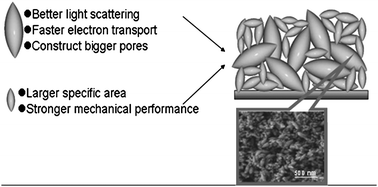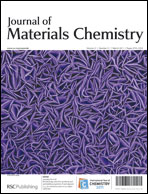Controlled synthesis of ZnO spindles and fabrication of composite photoanodes at low temperature for quasi-solid state dye-sensitized solar cells
Abstract
In this paper, by altering reactants concentration, ZnO spindles with different sizes were controllably prepared through a fast precipitation process in aqueous solution. Some important characteristics such as specific area, macropore structure, light scattering and electron transport properties of the photoanodes were systematically investigated. The results showed that photoanodes composed of small-sized ZnO spindles had a larger specific area for


 Please wait while we load your content...
Please wait while we load your content...